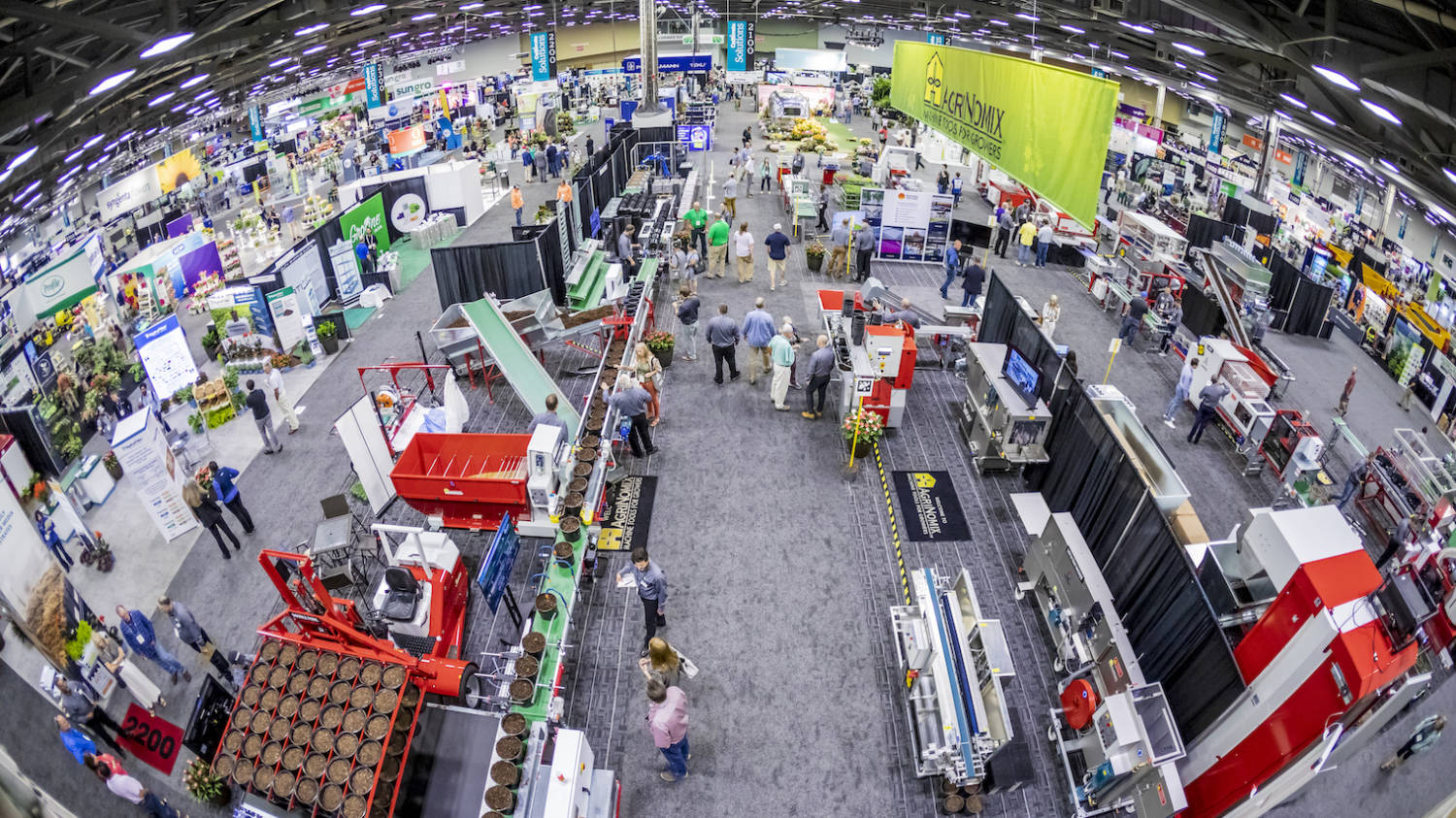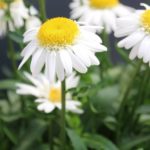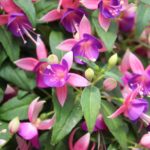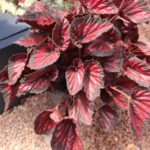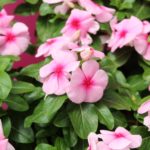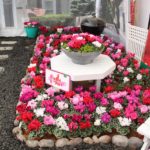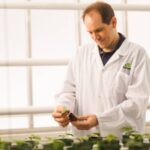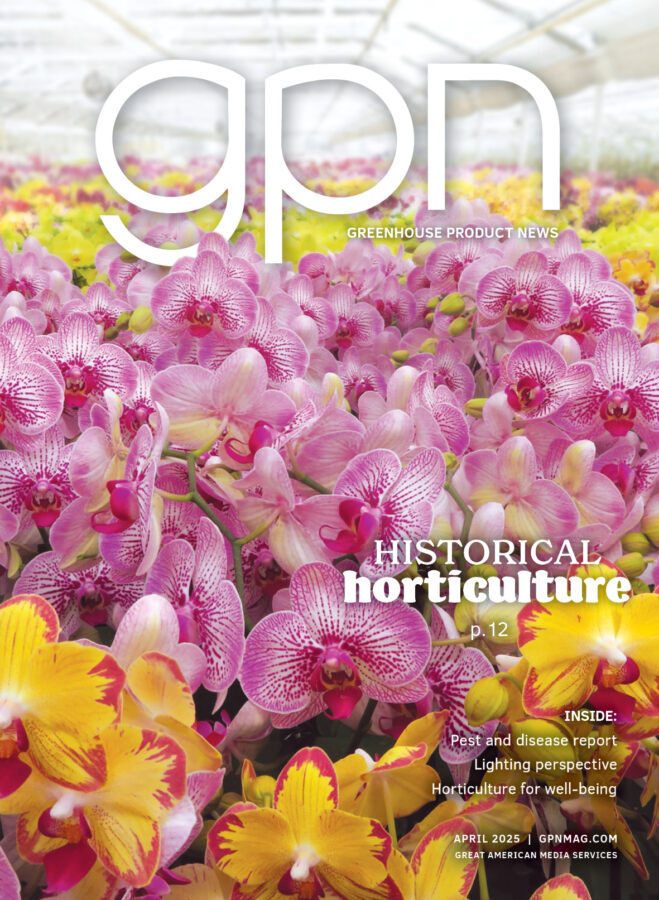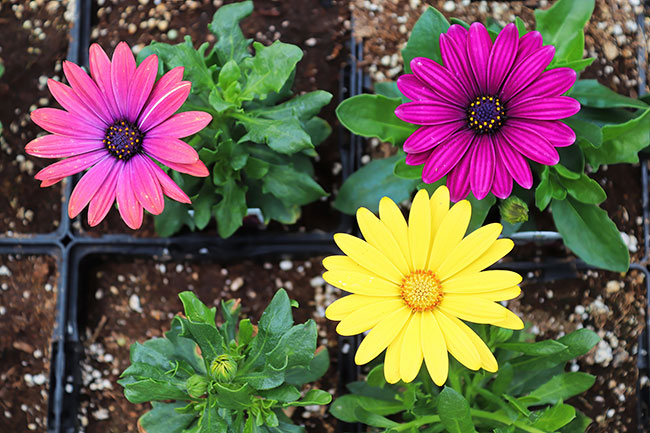
Holistic Prevention of Plant Diseases the Best Practice
It’s funny if you realize that we have embraced (more or less) a holistic approach to our own health. We believe that doing certain things like exercising, eating better foods and avoiding smoking can help us reduce our chances of obesity, which can lead to diabetes and heart disease.
Why do we still go straight to chemotherapy for our plant diseases? Plants are really not so different than animals like us. What we eat and the conditions we live under greatly affect our illnesses. If the plants are given a bad diet (including too much nutrition), the wrong temperatures, or poor quality potting medium they can catch something that we then treat with chemotherapy. How about trying a more holistic approach to our plants?
Holistic is defined as “relating to or concerned with complete systems rather than with individual parts.” For humans we include the mind (mental health) as a critical part of avoiding or limiting repercussions of some biological diseases. Obviously this does not apply to plants, but we can look at other factors instead of relying solely on fungicides.
Sanitation and Clean Growing
Many diseases can be avoided altogether if a thorough and consistent sanitation program is in place; stopping disease before it becomes established is critical.
Wash tools or surfaces first and follow up with a disinfestant, such as chlorine products (like bleach and chlorine dioxide), peroxides, and quaternary ammoniums (such as GreenShield, KleenGrow and Physan). They all work in some instances, but the quaternary products are overall very effective and relatively safe on plants, people, and metal. We would not eat food from our bathroom counter, right? Remember the right disinfestant can prevent bacteria and fungi and sometimes even viruses from growing and can even eradicate them from growing surfaces like benches.
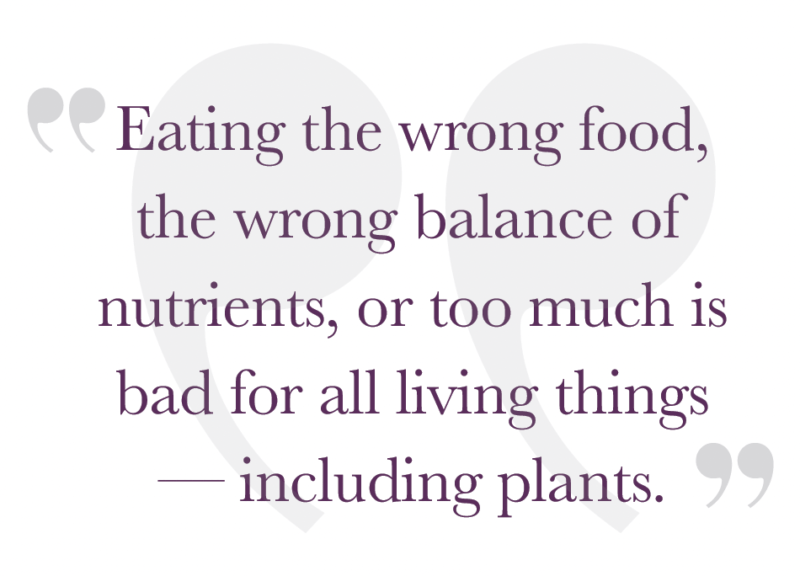 Use only new or thoroughly cleaned pots, flats and other containers. Wash and disinfest using the products listed above. We performed some simple tests in cooperation with a nursery operation to determine the actual need for cleaning if a quaternary ammonium soak was used on recycled plug flats. The best control was a thorough washing (cleaning) followed by a 5-minute soak in a quaternary ammonium at labeled rates. Even higher rates used much longer were not as effective as when the flats were first washed.
Use only new or thoroughly cleaned pots, flats and other containers. Wash and disinfest using the products listed above. We performed some simple tests in cooperation with a nursery operation to determine the actual need for cleaning if a quaternary ammonium soak was used on recycled plug flats. The best control was a thorough washing (cleaning) followed by a 5-minute soak in a quaternary ammonium at labeled rates. Even higher rates used much longer were not as effective as when the flats were first washed.
New, High-quality Growing Medium
I think it is always best to use only new potting media. Do not add native soil to any potting medium, ever. Think about how potting medium gets into a compost or dump pile. The plants fail to grow and are not salable (signaling the possibility of a disease) or they are simply overage.
If the potting medium has already been through a growing cycle, it is reduced and now contains roots and at least lower stems of the crop. Reusing potting medium also exposes the new plants to pesticides and fertilizer. How can you determine the rate of fertilizer to add when you do not know what is already in the potting medium?
Although every plant pathologist will tell you to only use pathogen-free seeds, cuttings, liners and other materials, this appears to be getting harder right now. Check all materials that you purchase when they arrive and place tracking numbers on them to determine the exact source if a disease shows up later (this is especially important for seed lots).
If you have your own stock plants, maintain them in a healthy unstressed state. Take cuttings from the tops of the plants to facilitate rapid rooting and avoid possible contamination. Clean cutting instruments between plants. Never use any plants with symptoms on any part of the plants; taking cuttings from a plant that has symptoms on one area but not another is not safe.
Water Management
If you recycle water, consider a water treatment. This water has the same concerns as reused potting media. Fertilizer, pathogens and pesticides may wreak havoc in your propagation and throughout production of the crop. The most common pathogens that are spread this way are the water molds Pythium and Phytophthora. However, Erwinia has been found in southern ponds and I have even seen leaf spot pathogens like Helminthosporium reintroduced into the foliage of palm trees when recycled water is used to overhead irrigate them.
Keep leaves dry. Do not water crops from overhead, if at all possible. Wet leaves are ideal targets for many plant pathogens. Splashing rainwater or overhead irrigation spreads spores for bacteria and many fungi such as Alternaria, Cercospora, Colletotrichum, Cylindrocladium, Glomerella, Helminthosporium, Myrothecium, Pseudomonas, and Xanthomonas.
There are only a few foliar diseases that spread and infect without the help of free water on the leaves, including rust, powdery mildew, and downy mildew.
These diseases require moderate relative humidity but spread via wind or fans and infect leaves with a mere film of moisture. Overhead irrigation will spread rust spores but this is not 100% necessary.
Don’t use poor-quality potting media that can be waterlogged; that is the best way to stress roots and Pythium can take off. I have done trials over the years with Pythium and found that if you improve conditions of how often you water and maintain good temperature management, plants can recover from Pythium root rot.
Plant Nutrition
Finally, let’s talk about fertilizer/plant nutrition. Eating the wrong food, the wrong
balance of nutrients, or too much is bad for all living things — including plants. Some diseases won’t happen at all unless the plants receive the wrong source of nitrogen at the wrong pH. Table 1 shows a summary of the effects of fertilizer (and source of nitrogen) on some diseases. Clearly, there are many diseases that cannot be easily summarized but very few are unaffected by how you feed your plants. Typically, over-feeding is bad and under-feeding is bad for disease resistance. Sometimes the effects are direct on the pathogen (like Fusarium), while other times it is through effects on the plant.
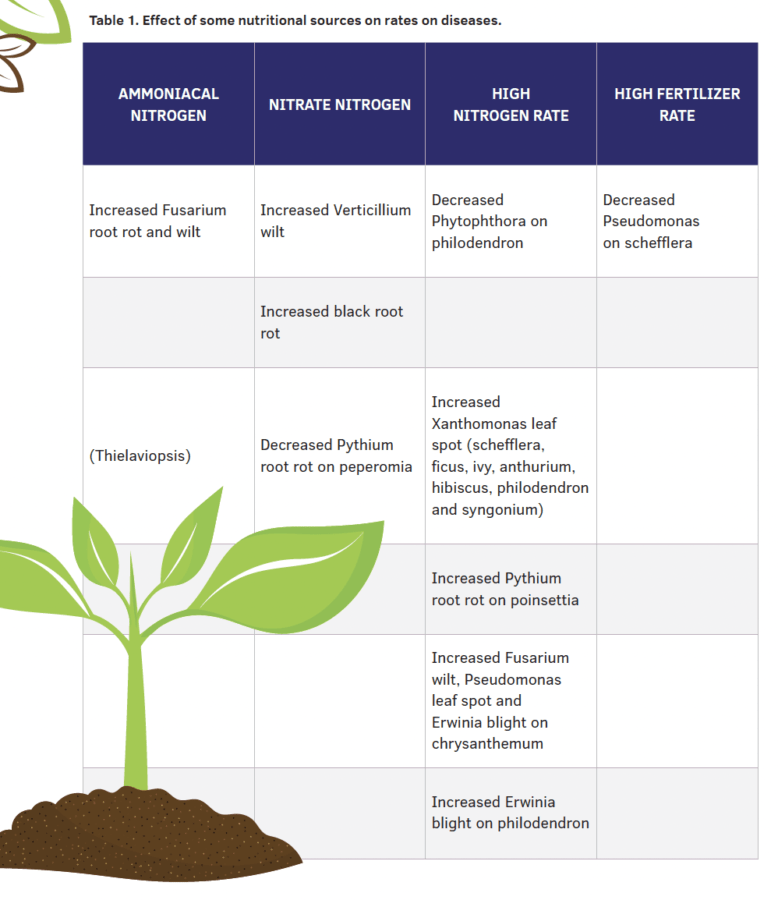
Here are a few rules for fertilizing crops to reduce diseases:
- First and foremost, supply nutrients in a balanced way to the plant.
- Know the main disease issue of your crop; not all diseases respond the same way to mineral nutrition even on the same plant.
- Supply nutrients at the right rate and right time for the crop to use.
- Choose the nitrogen form.
- Modify the environment to make nutrients available to the crop.
Watch the Temperature
While changing the growing temperature is only available in a greenhouse (and not even all greenhouses) you can learn a lot if you know when a disease might show up. You can at least target treatments and even make sure to scout for the right disease based on temperatures. We never even try to work on powdery mildew or Botrytis trials until winter (for Arizona). In other places, these diseases may be seen in fall through spring. Figuring out when something might happen is one of the best ways to manage diseases without huge fungicide/bactericide costs, as well as minimize negative effects that can occur from overuse.
Table 2 summarizes the optimal temperatures (when the disease is worst) for some tropical plant diseases. This work was completed when I worked for the University of Florida in the 1980s and early ‘90s. For diseases I don’t cover in the table, you can often look up specifics by searching the internet with the disease name and temperature requirements.

Conclusion
Overall, holistic management of plant diseases is the most practical way to produce the best crop without overuse of bactericides and fungicides. Clearly, there are conditions that we cannot always control and we need to resort to pest control products. Think of the crops more like us than a product at least once in a while.


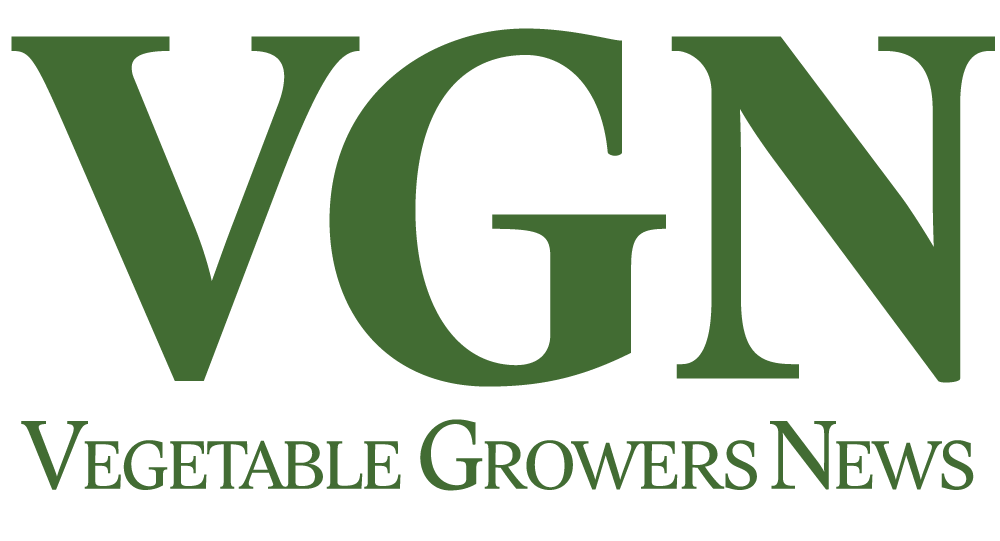
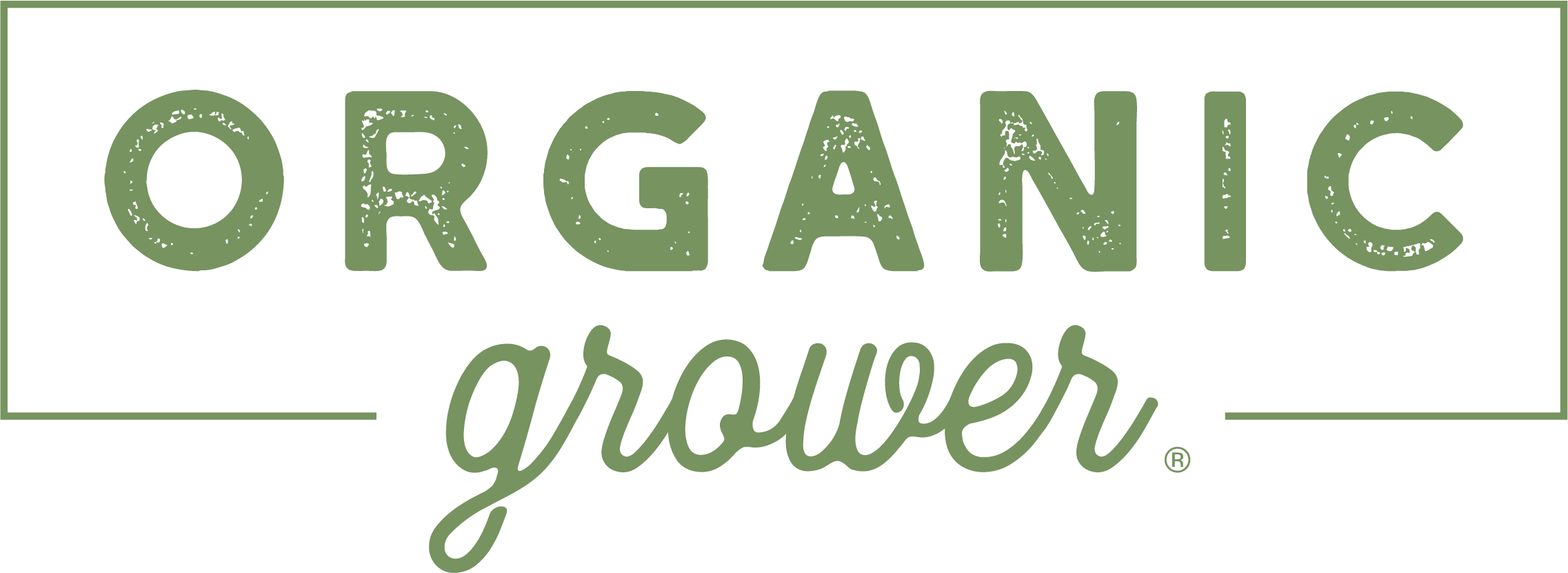




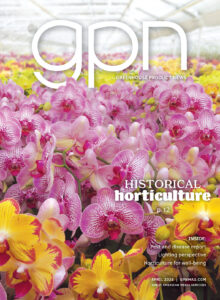
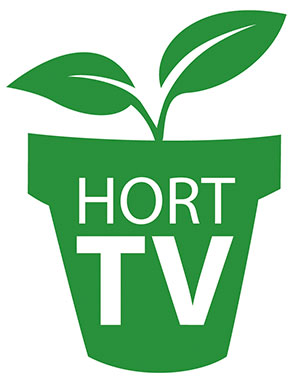 Video Library
Video Library 
